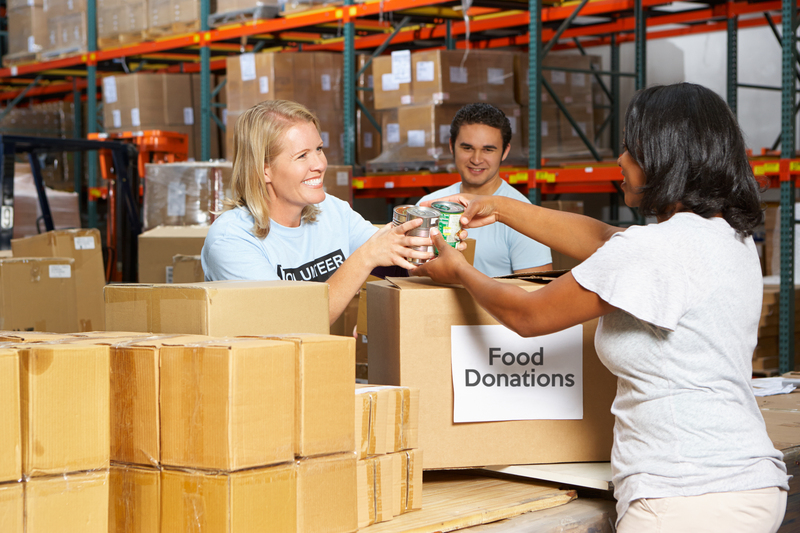Easy Steps for Styrofoam Waste Disposal
Posted on 06/03/2025
Styrofoam, also known as expanded polystyrene (EPS), is a popular material used in packaging, insulation, and various consumer products due to its lightweight and insulating properties. However, disposing of Styrofoam can be challenging since it is not biodegradable and can occupy significant landfill space. This article highlights easy steps for the proper disposal of Styrofoam waste to minimize environmental impact. Moreover, we will discuss the pros and cons, provide useful tips, and present key takeaways and conclusions.
Step 1: Identify Types of Styrofoam
Before disposing of Styrofoam, it is essential to identify its type. Styrofoam can be categorized into different forms such as food containers, packing materials, or construction insulation. Recognizing the type helps in determining suitable disposal methods:
- Food Containers: Often used for takeout or disposable plates and cups.
- Packing Materials: Includes shapes or pellets to protect items during shipping.
- Construction Insulation: Used in building and home insulation.

Step 2: Check Local Recycling Programs
Many communities offer recycling programs that accept Styrofoam. Check with local waste management authorities or recycling centers to see if they accept Styrofoam and under what conditions. Some centers may require clean and dry Styrofoam, free of contaminants like food residue or paint, for recycling.
Step 3: Drop-off at Designated Facilities
If your local recycling program accepts Styrofoam, find out where the nearest drop-off facilities are located. Some grocery stores, hardware stores, and dedicated recycling centers set up collection points specifically for Styrofoam recycling. Transport your segregated and cleaned Styrofoam waste to these locations for proper recycling.
Step 4: Consider Reusing Styrofoam
Before disposing of Styrofoam, consider if it can be reused. Styrofoam packing peanuts can be reused for future shipping or storage needs. Larger pieces of Styrofoam can be repurposed for craft projects, insulation for plant pots, or weatherproofing solutions. Reusing Styrofoam reduces waste and extends its lifecycle.
Step 5: Mail-back Programs
Some companies offer mail-back programs that accept Styrofoam waste. Participating in these initiatives involves collecting Styrofoam, packaging it according to the program's guidelines, and sending it to designated addresses. It is an effective method, especially for areas with limited local recycling options.
Step 6: Avoid Burning Styrofoam
Never burn Styrofoam as a means of disposal. Burning Styrofoam releases toxic chemicals into the environment, posing serious health risks to humans and animals. It is vital to follow safe and environmentally-friendly disposal methods.
Step 7: Reduce Styrofoam Usage
One way to tackle the Styrofoam disposal issue is to reduce its usage. Opt for alternative packaging materials such as cardboard, biodegradable plastics, or reusable containers. By reducing reliance on Styrofoam, we can minimize waste generation and its environmental impact over time.
Pros and Cons of Styrofoam
Pros
- Lightweight and easy to handle.
- Excellent insulating properties.
- Cost-effective material.
Cons
- Non-biodegradable and can take hundreds of years to decompose.
- Occupies significant landfill space.
- Potential to release harmful chemicals if burned.
Tips for Styrofoam Waste Disposal
- Avoid Contamination: Clean Styrofoam before disposing of it for recycling.
- Compact Styrofoam: Breaking down large Styrofoam into smaller pieces can save space and make storage easier.
- Educate Others: Spread awareness about proper Styrofoam disposal methods within your community.

Takeaways
- Proper Styrofoam disposal starts with identifying the type of Styrofoam.
- Check and utilize local recycling programs and designated drop-off facilities.
- Reusing and reducing Styrofoam can contribute to better waste management.
- Burning Styrofoam is hazardous and should be avoided at all costs.
Conclusion
Styrofoam waste disposal can be effectively managed through proper identification, recycling, reusing, and reducing its usage. By following the outlined steps, we can significantly reduce the environmental impact of Styrofoam waste. Opting for environmentally-friendly practices and spreading awareness about the importance of proper waste disposal ensures a cleaner and safer planet for future generations. Embrace these easy steps for Styrofoam waste disposal and be part of the solution today!


 Get a Quote
Get a Quote